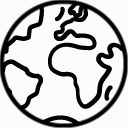

South Africa’s Drakensberg grasslands are home to more than 2500 species of plants and endangered birds such as the wattled crane. Fresh water from this area provides crucial clean drinking water for millions of people. It’s also an important landscape for sheep farming. But this landscape is under threat. In 2021, WWF and H&M Group started a regenerative wool production partnership project in South Africa’s Drakensberg grasslands.

Wool has the potential to be a long-lasting and low footprint material in fashion if produced through more sustainable, regenerative farming methods. The Eastern Cape Drakensberg is one of the eco-regions in the country where wool production has a particularly significant impact in a critically endangered biome. Addressing the threats that overgrazing, invasive species and poor land management pose to the Eastern Cape Drakensberg grasslands is an overlapping priority for H&M Group and WWF.

The partnership project will contribute to an overarching vision of increasing regenerative wool production at the landscape level in the South African Grasslands biome in such a way that biodiversity and social development is improved in this critical landscape. It aims to assist in securing the Eastern Cape Drakensberg strategic water source area, protecting biodiversity corridors, and contributing to the viability of the new Grasslands National Park in South Africa. By working with both commercial and communal sheep farmers to achieve resource-efficient, climate resilient agriculture and regenerative livestock grazing as well as restoring natural habitats, we can unlock more sustainable wool.
Why must we invest in these rangelands?
The grasslands are critical biomes for biodiversity globally and particularly in South Africa. They cover nearly 30% of South Africa’s land area, providing habitats for nearly half of the country’s 34 endemic mammals, but the landscape is under threat and only approximately 3% of the land area is formally protected. The grasslands provide habitats for 10 of the 14 globally threatened bird species found in South Africa, a third of the 107 threatened butterfly species in South Africa and more than 2500 plant species live in these habitats.

Within the Eastern Cape Drakensberg area threats to the grasslands include overgrazing by cattle and sheep, poor rangeland and fire management, invasive plants and land clearance for crops. The Eastern Cape Drakensberg grasslands have also been identified as a strategic conservation priority area by WWF South Africa due to its significance for biodiversity and as a Strategic Water Source Area.

Looking ahead
This initiative provides an exciting opportunity to demonstrate how conservation organizations and corporate partners can collaborate to deliver positive outcomes for biodiversity through work with large and small–scale farmers on regenerative production. Work in this landscape is important in its own right, but will also help inform further efforts by H&M Group and WWF to improve the wool industry at scale.
Together we can contribute to reversing biodiversity loss and securing a nature positive future.
Videos and fact sheets
